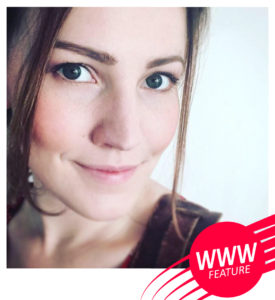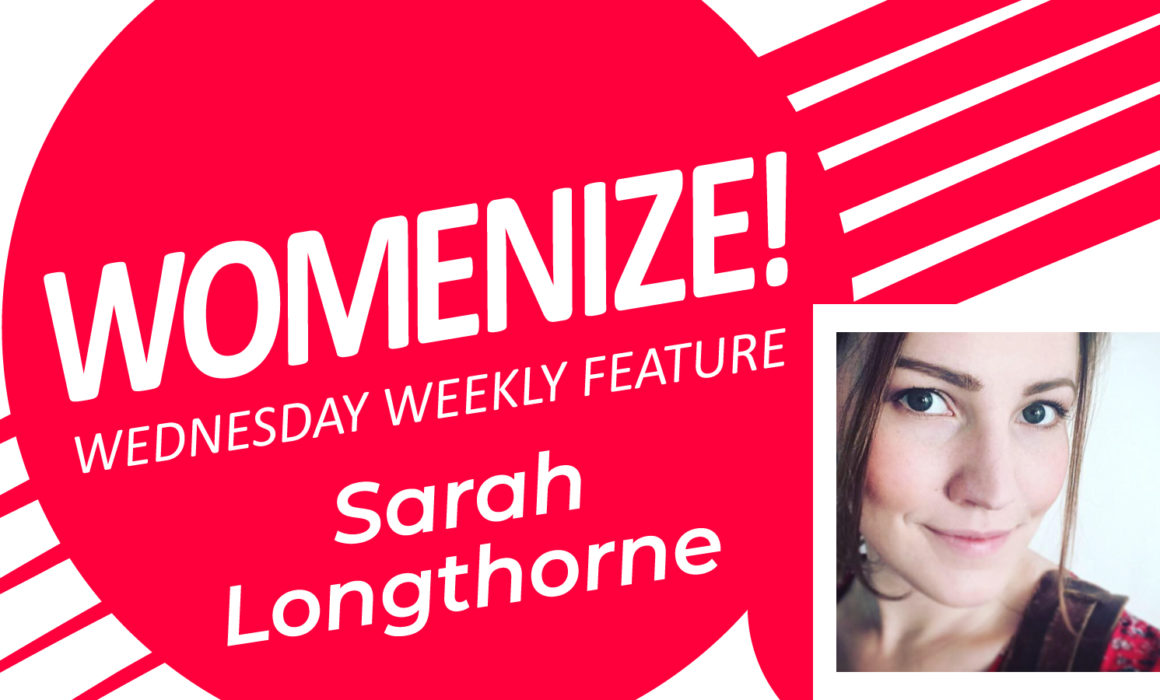WWW FEATURE: Sarah Longthorne
Womenize! Wednesday Weekly is our weekly series featuring inspirational women from games and tech. For this edition we talked to Sarah Longthorne, Narrative Designer at Sumo Digital. Read more about Sarah in this interview:
 Hi Sarah! You are working as a narrative designer at Sumo Digital, an award-winning game developer, and have gathered years of experience in this field. Could you tell us a bit more about your journey towards your current position?
Hi Sarah! You are working as a narrative designer at Sumo Digital, an award-winning game developer, and have gathered years of experience in this field. Could you tell us a bit more about your journey towards your current position?
Sure! First thing’s first — I’ve always been a writer. Growing up, writing and acting were my ‘thing’, and I pursued both until I finished my studies in 2014, graduating from the University of East Anglia (UEA) with a first-class degree in Scriptwriting and Performance. But past that point, I didn’t know what options were available to me. Film and television were attractive choices, but seemed impossible to get into. Becoming an author was something one had to pursue on the side until they (maybe) became successful. I played games, but knew nothing about the industry; it didn’t occur to me that there were opportunities there for creative writers like myself. So I bounced around in marketing for a few years, thinking I’d become a copywriter, until one day a coworker asked me, “You like video games, right? Why don’t you apply for Jagex?”
Jagex was local, one of perhaps four nearby studios. Looking at the company website, a career in games seemed about as lofty as film or television, but I saw a marketing role I could apply for and went for it. I didn’t have all the required skills, so I took a few days off work to teach myself and ended up landing the job. Once in the studio, I soon clocked that *someone* must be writing this content — in this case, the developers themselves. So I volunteered to pitch in. I contributed RuneScape lore books and took part in game jams and competitions — even winning one. Soon, people were approaching me, and I got my first taste of writing bark lines for Block N Load. By the end of my time at Jagex, I had enough experience for a small portfolio and — with a lot of encouragement from my partner, and much support from my new mentor, Greg Buchanan, whom I’d met through Twitter — I took the leap into freelance.
I was freelance for about two months, and the whole time I was applying for in-house roles and updating my website and portfolio. By the end, I had job offers from UNRD and Fusebox Games, as well as an invitation to a second interview at Wooga. I went for Fusebox, excited for the opportunity to hone my skills writing branching narratives. I worked there on season two of Love Island The Game (as well as the season one reunion) for about nine months before I was headhunted for my current position at Sumo. It was a tough choice to leave because the team was fantastic and I’d had so much fun writing for Love Island, but ultimately, I think, the right one for my career.
A lot of people might confuse narrative design with games writing, or assume that they are the same thing. While writing is a big part of the narrative design role, there is more to it than ‘just’ writing, right? Which are the most striking additional responsibilities a narrative designer has to face?
Games Writing and Narrative Design are two separate roles, but often studios will hire someone to do both tasks under one title, which has been the case for me.
It breaks down like this: the narrative designer literally designs the content that the writer will, well, write. They come up with the premise, then outline (or ‘break’) the story and document everything. They’re asking questions like, “Should we use a cut scene to tell this part of the story, or is there another way we can deliver it that will be less intrusive for the player? Is the narrative complementing the gameplay, or are we dealing with ludonarrative dissonance? Would choices bolster this game and its themes, and if so, what’s the right approach to take with them?” They set the parameters for the writer to work within. After that, the writer’s job is to write, edit, rewrite and re-edit.
Which advice would you give aspiring narrative designers or games writers who maybe doubt their own abilities, or don’t know how to take the first step towards their career goal?
Women generally have more of a tendency to rule themselves out from opportunities where they don’t fit all the criteria. Every step I’ve made in my career has come at the cost of months of coaxing and encouragement because I didn’t think I was good enough. But it is ALWAYS worth applying. Don’t apply, don’t get; do apply… might get. If you rule yourself out, you’re just doing the hiring manager’s job for them. And who knows? They may view you more favourably than you view yourself. As my manager often says, a job advert is a wish list for his perfect candidate; your job is to convince him you come closer to that description than the other candidates, not to check every box.
If you’re unsure about your first step, I recommend reaching out to other devs. Conferences are great, but I personally owe a lot to social media, particularly Twitter. Most devs are a friendly, welcoming bunch. Say hi! You may meet someone willing to set you on the right path. It’s also where you’ll learn about the various available mentorship opportunities! I recommend Limit Break in particular, but individuals will often offer mentorship on their own, too — my own mentor, Greg Buchanan, is one such (keep an eye out for announcements on his Twitter), and there’s recently been an initiative to match aspiring Black devs with mentors. Have a look!
Thank you for your time, Sarah!
Sarah’s Links: Sarah’s Twitter | Sumo Digital Website
WWW Feature by Jessica Hackenbroch

